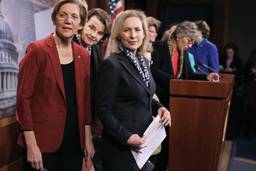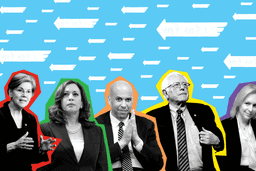How Trump Has Transformed the War for Religious Liberty
The infrastructure built up to support the religious liberty crusade is still intact. But Trump’s campaign has exposed a deep vulnerability of the Right.
Theo Anderson

“Religious liberty is under threat in this country like never before,” Sen. Ted Cruz said last fall. He predicted that, “as these threats grow darker and darker and darker, they are waking people up in Texas and across the country.”
But the past year has been a fizzle for the crusade.
The conservative writer Rod Dreher wrung his hands recently and wondered what it would “take to get American Christians off their self-satisfied, complacent dopey butts and fight for our religious liberty.” David French, a National Review writer and energetic religious liberty warrior, recently described the 2016 election as a “colossal, miserable, disgusting failure.”
Ironically, Donald Trump’s anti-Muslim bigotry is to blame for this “failure” of religious liberty.
Cruz had a solid case when he forecast, in the run-up to the campaign season, that 2016 would be “the religious liberty election.” The Right had worked for years to make it the central issue in a reinvigorated culture war. Loads of money was funneled to the project, and all the necessary political, legal and institutional muscle seemed to be in place.
Notably, the GOP has dominated state-level elections since 2010, and Republicans now hold nearly 900 more seats than Democrats in state legislatures — 4,125 of 7,383. There are also dozens of highly-coordinated, state-level think tanks and political operations devoted to lobbying state legislatures for conservative causes. Religious liberty has been a key issue for them.
The work is backed by impressive legal resources. In 2013, for example, the Templeton Foundation ponied up $1.6 million to create a Religious Liberty Clinic at Stanford University Law School. Its director, James Sonne, is an adjunct professor at Ave Maria School of Law, a Catholic institution with an explicitly right-wing mission and close ties to current and former luminaries of the Right, including Clarence Thomas and Antonin Scalia.
The fruits of all this seed sowing seemed to materialize in March 2015, when Indiana’s governor and Trump’s vice-presidential nominee, Mike Pence, signed the Religious Freedom Restoration Act into law. Then things began unraveling.
The bill proposed to allow businesses in Indiana to cite their religious liberty as a legal defense for declining to serve certain (i.e., LGBT) customers. The blowback was swift and unexpected, since a good deal of it came from the state’s corporate interests, which rightly feared that bigotry wouldn’t be good for business. Indiana wound up paying a public relations firm to try to repair the damage.
Other states have taken note. In March, Georgia’s legislature passed a religious liberty bill, which the state’s Republican governor swiftly vetoed. The conservative National Review sounded more deflated than angry in the aftermath, noting that evangelicals and other right-wing activists were “livid and threatening to make the governor pay. But for all their bluster, social conservatives may not have the political power they once did, even in a Bible-belt stronghold such as Georgia.” A month later, a push to send the religious liberty question to a ballot initiative failed in Missouri’s state legislature. It was “a slap in the face to Missouri voters,” according to the president of a Missouri-based conservative think tank.
More slaps were coming. In July, two prominent leaders of the Christian Right, Tony Perkins of the Family Research Council and Jerry Falwell, Jr., of Liberty University, had speaking slots during the last night of the Republican National Convention. Neither had much to say about religious liberty. That’s partly because Trump has said little about it.
The issue isn’t dead. The infrastructure built up to support the religious liberty crusade is still intact. But Trump’s campaign has exposed a deep vulnerability. His raw bigotry and racism in this election have made religious liberty a live question, but not in the way Cruz had intended. Claims about dark threats to Christian liberty have less persuasive power in a context in which Muslims are openly insulted and their motives regularly called into question by the GOP’s presidential nominee.
It may be that the Christian Right can strengthen its case by broadening out the defense of religious liberty to include other faiths. Some of its leaders seem to be trying. A piece published in The Guardian this year quoted Sonne, of Stanford’s Religious Liberty Clinic, as lamenting that “religious discrimination in the workplace is an issue that continues to fester in the U.S., to the particular detriment of minority faiths like Muslims, Sikhs and Seventh-day Adventists.” The move to bring Muslims and other “minority faiths” under the umbrella makes strategic sense, given the options.
But few of the twists and turns in this campaign have been as stunning as the way Trump has defused the religious liberty war with his open religious bigotry. Christians were supposed to be the uniquely persecuted victims in the spotlight. Now, Cruz and other would-be religious liberty warriors are torn between getting serious about defending a more expansive vision of religious liberty — or retreating from this culture war. So far, it hasn’t been much of a contest.








